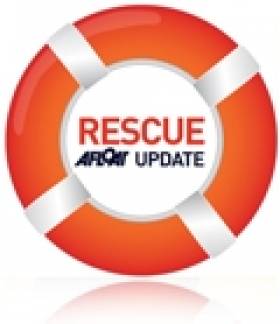Displaying items by tag: Ukrainian
18 Ukrainian ILCA/Laser sailors were outside of Ukraine, training or racing when the 2022 Russian invasion of Ukraine started at the end of February.
The sailors are mostly from Odesa and Kyiv and have been unable to return to their homes.
These sailors continue to train and compete internationally thanks to generous donations from the sailing community. The Irish Laser class association, ILCA Ireland, were quick to respond to the call for help and raised €1,500 in donations to support Ukrainian ILCA sailors.
Irish Laser sailors collected €700 which ILCA topped up to €1,500.
To assist this group, EurILCA (the European governing body for ILCA/ Laser dinghy) launched a crowdfunding campaign and requested assistance from the 42 district members across Europe; one of them being ILCA Ireland.
Donations are being managed by EurILCA with all collections going solely to support the ILCA Ukrainian team to travel, train and race. More information and link to make further donations HERE
Sofiia Naumenko, the 23-year-old ILCA 6 sailor from Dnipro, has coordinated the efforts.
In an interview on 21st May, she said; "When the war started, I was in Spain. I had no idea where to stay and so I was put in contact with a former windsurfer from my country who has lived in Spain for ten years. Her name is Olga Maslivets. She hosted me in her apartment and then helped me find a place to sleep both at the Europa Cup, held in Port de Pollenca, and at the Princesa Sofia Trophy, in Palma de Mallorca."
Sofiia is now training at lake Garda in Italy and commented; "Here in Italy the Ukrainian team is much bigger and therefore we all live in different places. After this regatta, I will go to France, to the Hyères Olympic Week, where I believe the organizing committee will help me find a cheap accommodation. After all, I expect to have to stay in Europe for a while longer. "
The 18 sailors from the Ukrainian ILCA team are:
1. Sofiia Naumenko (ILCA 6)
2. Devid Izmailovsky (ILCA 6/7)
3. Oskar Madonich (ILCA 7)
4. Andrii Verdysh (ILCA 6/7)
5. Danylo Raichuk (ILCA 6)
6. Ivan Zhukalin (ILCA 7)
7. Valeriy Kudryashov (ILCA 7)
8. Stanislav Mulko (ILCA 7)
9. Semen Khashchyna (ILCA 6)
10. Nazar Artiukh (ILCA 6)
11. Roman Akopov (ILCA 6)
12. Andrii Lipchenko (ILCA 6)
13. Yelyzaveta Vynohradova (ILCA 6)
14. Anna Dehasiuk (ILCA 6)
15. Ivan Pylypchii (ILCA 4)
16. Ivan Antipin (ILCA 4)
17. Varvara Postrelko (ILCA 4)
18. Denys Saidukov (ILCA 7)
Body Recovered Off Dublin Thought to Be Missing Fisherman
#RESCUE - The Evening Herald reports that a body recovered 14km off the coast of north Dublin on Sunday is believed to be that of a missing fisherman.
The grisly find was made by the fishing vessel Rath Eilte in the waters off Skerries. A post-mortem was set to be carried out yesterday to determine the cause of death.
Found fully clothed in black and yellow oilskins, the remains are thought to be those of a Ukrainian in his 30s, a crewman on the Kilkeel-registered Zenith who was reported missing some 14.5km off Clogherhead in Co Louth on 29 January.





























































